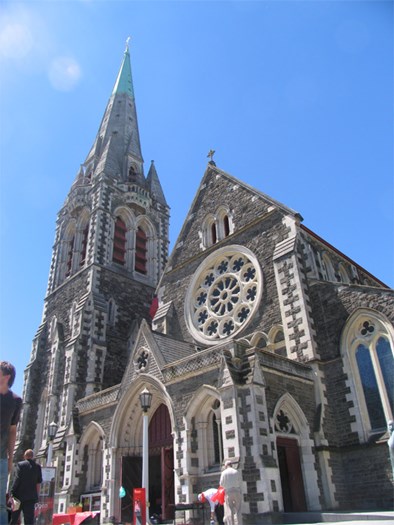CHRISTCHURCH - It was just before 1 p.m. on Feb. 22, 2011. The ground shook violently, glass shattered, people screamed . . . 20 seconds later, much of Christchurch was in ruins, 185 people are dead and thousands injured and left homeless by a 6.3 magnitude earthquake.
The people of this beautiful city, bordered by rolling hills and the blue Pacific Ocean, are still haunted by memories of that grim day.
Olivia Carville, a reporter at The (Christchurch) Press, says she was at her desk when her phone suddenly “went dead.”
Then the building began to shudder.
“I dove under my desk,” she says. “It began to sway from side to side and then bounce up and down. Rubble was hitting it like rain.
“When I was able to look out, I could see the sky. An entire corner of the newsroom was gone. The editor’s office was hanging out of the building. There was suffocating dust everywhere.”
As I drive from the airport into the city — 2 ½ years after the earthquake — it’s hard to believe that an earthquake ever happened. The quiet suburbs, with shady tree-lined streets, manicured lawns and colourful gardens, look exactly as they did on my last visit 10 years ago.
But then we arrive at a 9-square-kilometre that was at the centre of the quake, the “Red Zone.” Many of the buildings here were destroyed and the area was cordoned off with a chain link fence during reconstruction.
To get a further sense of the disaster, we visit Quake City, an exhibit put on by the Canterbury Museum, which uses high-tech sound and visual devices to give visitors a sense of what happened here that day. There’s even earthquake debris on display — the most notable is the steeple from Christchurch Cathedral which crashed down during the quake.

Above: Christchurch Cathedral, which had to be partially rebuilt after the 2008 earthquake.
Being the proud, resilient people they are, New Zealanders have moved on and Christchurch’s rebirth is well under way under strict new structural codes which limit the height of new buildings to just seven storeys.
The city government says it plans to make Christchurch “a city in a garden” and will invest $2 billion to create more greenspaces. They’re planning to rebuild the cathedral, and there are other promising signs, too. Tourists are returning, restaurants, cafes and bars are back in full swing and the 115-room Ibis Hotel, the first new downtown hotel built since the quake, has opened.
Earthquake Minister Gerry Brownlee proudly announced recently that the “Red Zone” will soon be renamed the “Rebuild Zone.”
“We’re bouncing back with new energy and inventiveness, while shedding our very conservative, stodgy blanket,” says Paul Lonsdale, manager of the Central City Business Association.
Roger Sutton, chief executive of the Canterbury Earthquake Recovery Authority, adds: “The rebuilt city will include a massive convention centre, covered sports stadium, health and justice precincts, and an inner-city transport hub — all wrapped in a leafy green frame.
“We’ll be funkier and zanier than before,” he says.
Lonsdale says that much has been done and much remains to be done and “we have no shortage of creative ideas.”
Nothing, it appears, can stop Christchurch now.